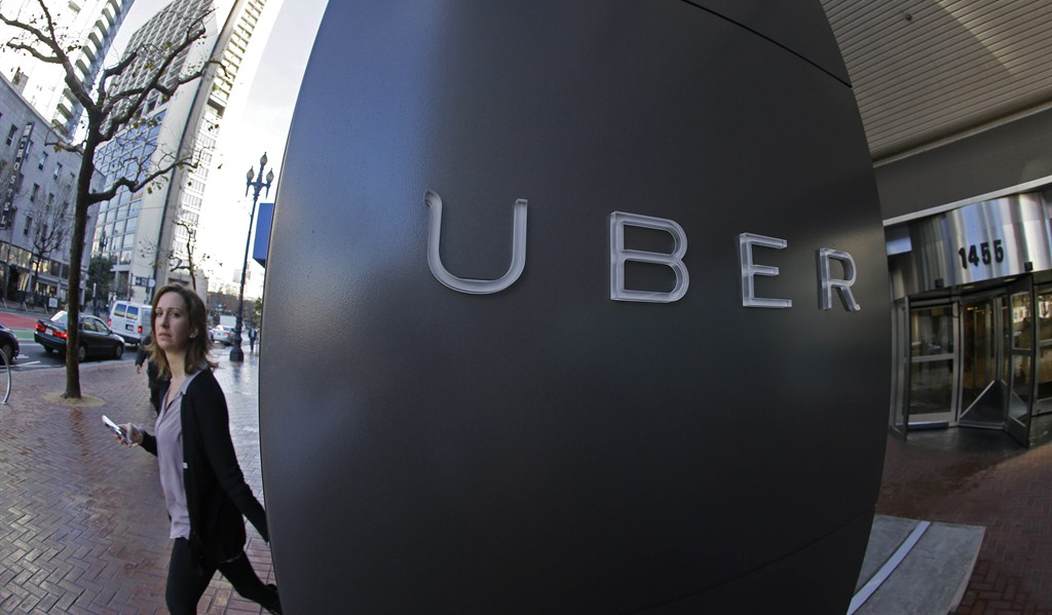A recent report released by Uber sheds some much-needed light on those who drive for the technology company, and why they choose to do so. Its findings add some empirical evidence to the bitter debate over ridesharing’s effect on the economy, and put opponents of the new technology on the defensive.
The report relies on internal company data and an outside survey of 601 drivers. It is authored by Jonathan Hall, Uber’s head of policy research, and Princeton University professor Alan Krueger.
The most powerful statistic in support of the claim that Uber benefits its drivers is the exponential rate of partnership growth the company has experienced. Uber now has over 160,000 active drivers, or drivers that have completed at least 4 trips in the past month, up from practically 0 in mid-2012. The growth shows no sign of slowing down. Last month, 40,000 new Uber drivers took their first trip, the highest number yet.
Weak labor market conditions are not a major explanation for Uber’s growth. Only 8 percent of drivers were unemployed before they began partnering with Uber. Since this rate is not much higher than the December unemployment rate of 5.8 percent, most Uber drivers are coming to the platform because they desire flexible work and the chance to earn supplemental income—they are not coming out of desperation. Half of Uber drivers work on the platform for less than 15 hours a week.
The traditional 9-to-5 job is not for everyone. About 75 percent of Uber drivers say the platform has made their lives better by giving them greater control over their schedules. A similar percentage of drivers say that they prefer being their own bosses over having traditional employers who offer set salaries and benefits.
Recommended
Driving for Uber can also serve as a bridge between employment opportunities. The extra income earned allows drivers to take their time seeking other employment that fits their needs. For this reason, about one-third of drivers say they partnered with Uber “to earn money while looking for a steady, full-time job.”
Uber has been more successful than taxi companies at attracting young workers. Only 9 percent of taxi drivers are under 30, but 19 percent of Uber drivers come from this age group, and 7 percent are students. Because of a complex regulatory system, including in some cases the need to purchase a medallion (a certificate allowing a taxi driver to operate), the cost of starting work as a taxi driver is often prohibitively expensive, especially for those just beginning their careers. As the report’s authors state, “The greater representation of younger people… may also reflect entry barriers into the taxi driver and chauffeur professions that make it more difficult for younger people to obtain such jobs.”
Uber employs a higher rate of female drivers than traditional taxi companies (14 percent compared to 8 percent) as well as college graduates (48 percent compared to 18 percent). The drivers the company attracts are one of the many ways Uber differs from existing taxi companies.
Uber offers a low-cost way for those with vehicles to try out a new way to earn money. Some obviously find that the arrangement does not work for them, but this is all the more reason to celebrate a work opportunity with low barriers to entry. Among new Uber drivers, 70 percent are still using the platform after 6 months, even though about half of Uber drivers have no previous experience as professional drivers.
In addition to flexible work, there is another reason drivers remain on the Uber platform—increased earnings. For 40 percent of drivers, Uber provides their greatest source of income. Only 11 percent of drivers think that partnering with Uber decreased their overall income, whereas 71 percent say that doing so increased their income.
Before expenses, Uber drivers earn an average hourly rate of $19, compared with $13 for taxi drivers (though the Uber driver survey data are not strictly comparable with the Bureau of Labor Statistics data on taxi driver income). In New York City, average earnings from driving with Uber rise to $30 an hour—double what an average New York City cab driver earns.
Critics of Uber often point out that these earnings are inflated, because the costs of owning a car, having insurance, buying gas, and providing maintenance are not deducted. However, most Uber drivers are working part-time to supplement their income. This means they already have a vehicle, and would in any case pay some of the fixed costs of vehicle ownership. It is clear that in the vast majority of markets Uber drivers’ net earnings are at least as much as taxi drivers’.
One shortcoming in the report is that the authors rely on a survey that only received responses from 601 drivers. The sample could be biased in a number of ways. More research is needed on a larger sample to confirm the results. However, the growth in the number of Uber drivers, even as the unemployment rate has declined and the rate of job openings has increased, sends a strong signal that driving for Uber is a desirable way to make extra money or earn a living.
Ridesharing’s growth potential cannot be overstated, along with its beneficial effect of increasing employment options for a diverse range of individuals. Though critics of ridesharing are unlikely to give up their fear mongering and protests, the positive effects of ridesharing will become apparent as more research is done and more cities create regulatory frameworks that support the new technology.

























Join the conversation as a VIP Member